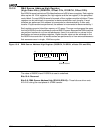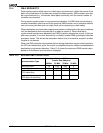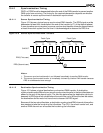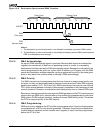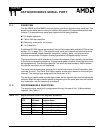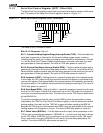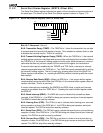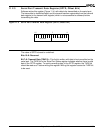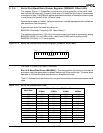
Asynchronous Serial Port
11-1
CHAPTER
11
ASYNCHRONOUS SERIAL PORT
11.1 OVERVIEW
The Am186ER and Am188ER microcontrollers provide an asynchronous serial port. The
asynchronous serial port is a two-pin interface that permits full-duplex bidirectional data
transfer. The asynchronous serial port supports the following features:
n Full-duplex operation
n 7-bit or 8-bit data transfers
n Odd parity, even parity, or no parity
n 1 or 2 stop bits
If additional RS-232 signals are required, they can be created with available PIO pins (see
section 13.1 on page 13-1). The asynchronous serial port transmit and receive sections
are double-buffered. Break character recognition, framing, parity, and overrun error
detection are provided. Exception interrupt generation is programmed by the user.
The transmit/receive clock is based on the internal processor clock internally divided down
to the serial port operating frequency. If power-save mode is in effect, the divide factor must
be reprogrammed. The serial port permits 7-bit and 8-bit data transfers. DMA transfers
through the serial port are not supported.
The serial port generates one interrupt for all serial port events (transmit complete, data
received, or error). The Serial Port Status register contains the reason for the serial port
interrupt. The interrupt type assigned to the serial port is 14h.
The serial port can be used in power-save mode, but the transfer rate must be adjusted to
correctly reflect the new internal operating frequency and the serial port must not receive
any information until the frequency is changed.
11.2 PROGRAMMABLE REGISTERS
The asynchronous serial port is programmed through the use of five, 16-bit peripheral
registers. See Table 11-1.
Table 11-1 Asynchronous Serial Port Register Summary
Offset from
PCB
Register
Mnemonic Register Name
80h SPCT Serial Port Control
82h SPSTS Serial Port Status
84h SPTD Serial Port Transmit Data
86h SPRD Serial Port Receive Data
88h SPBAUD Serial Port Baud Rate Divisor




